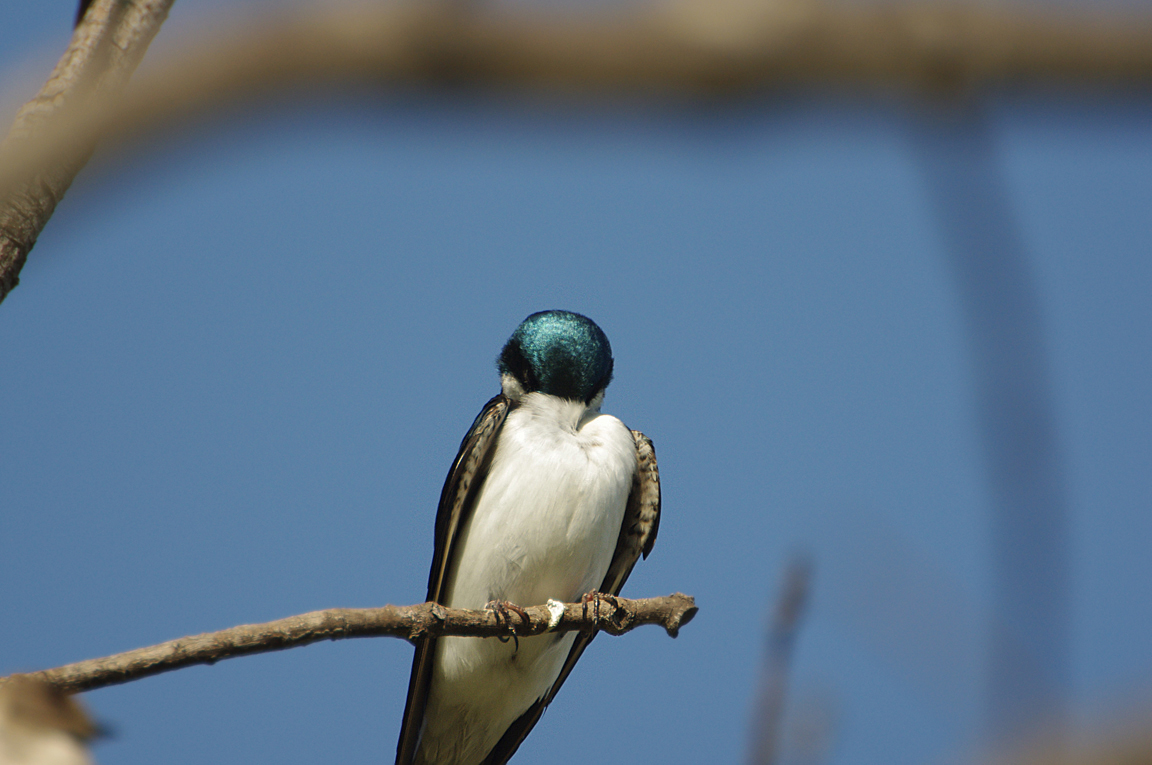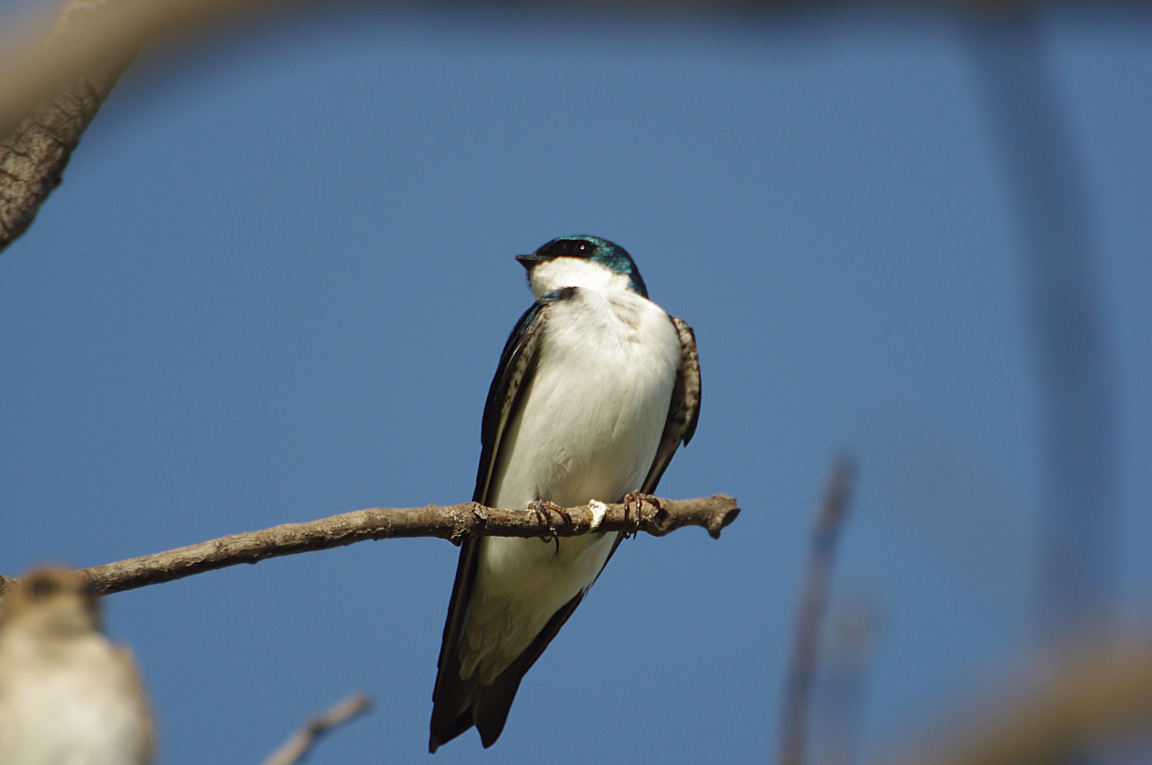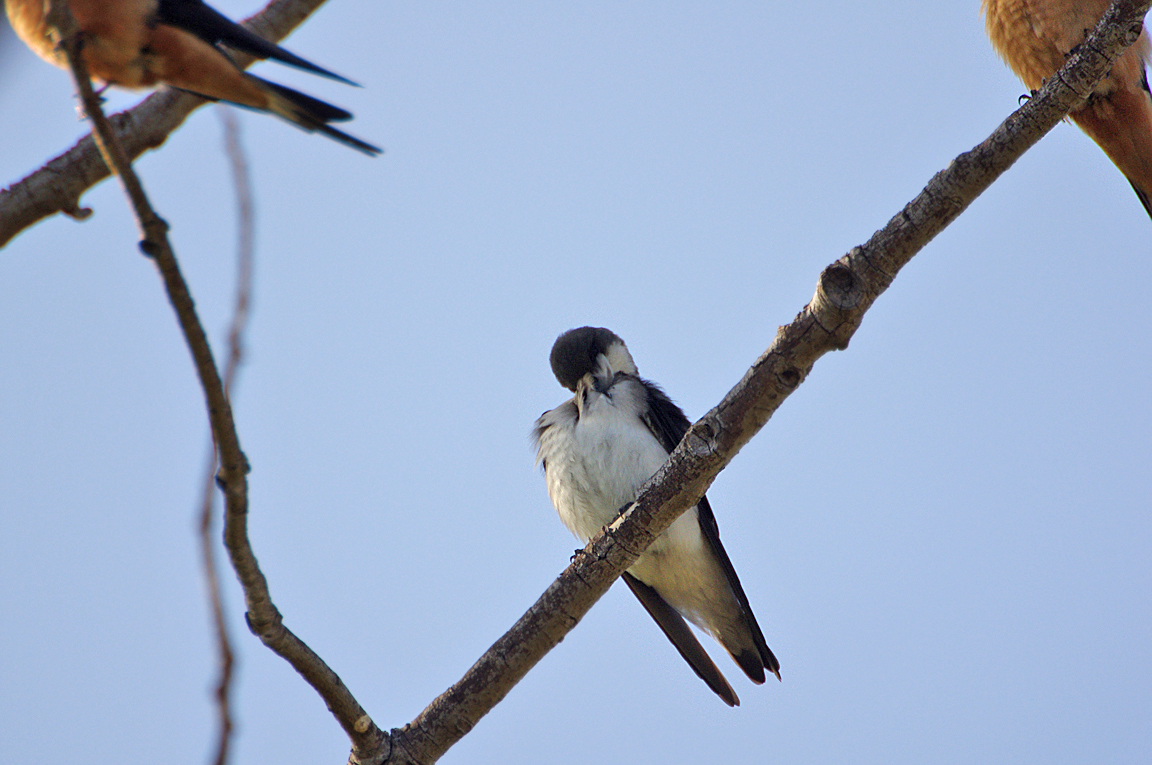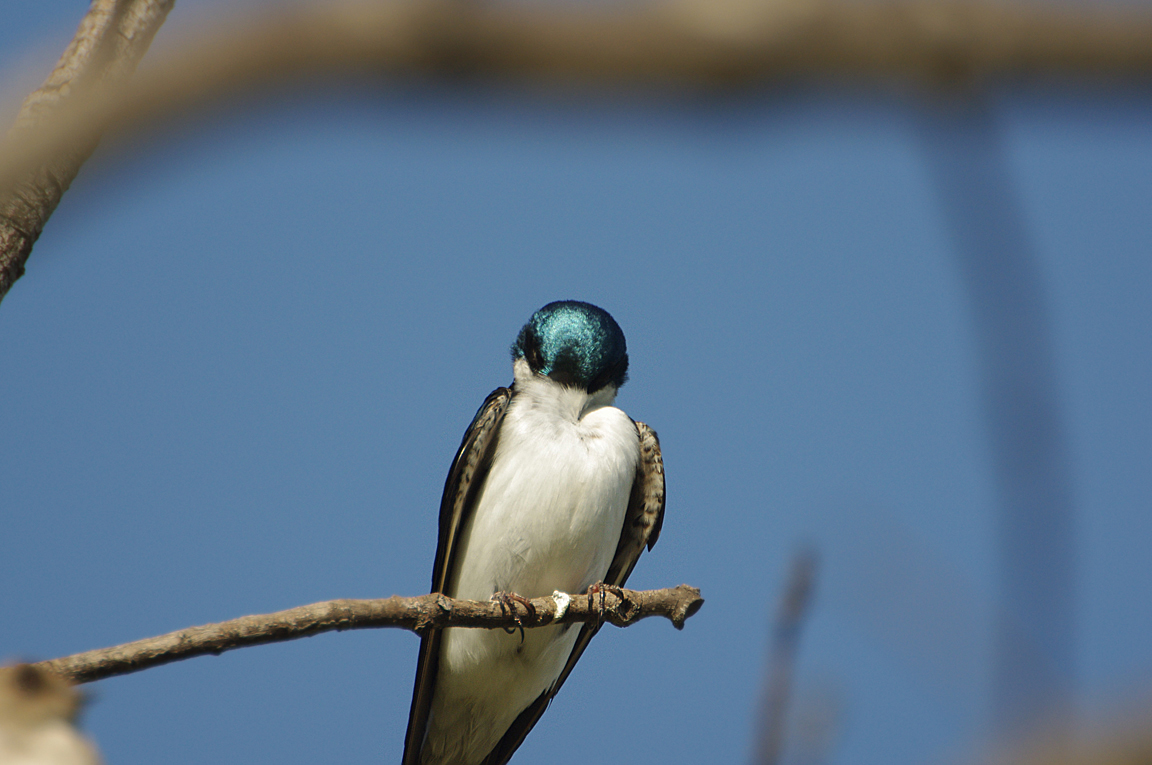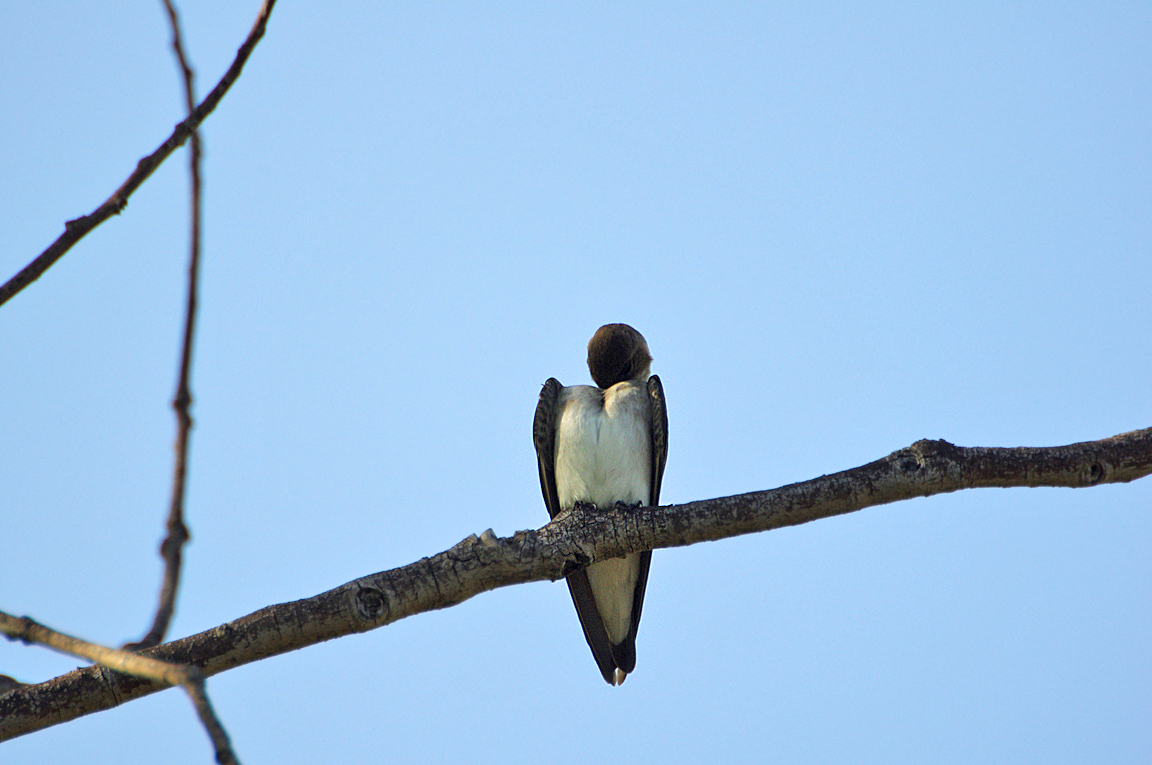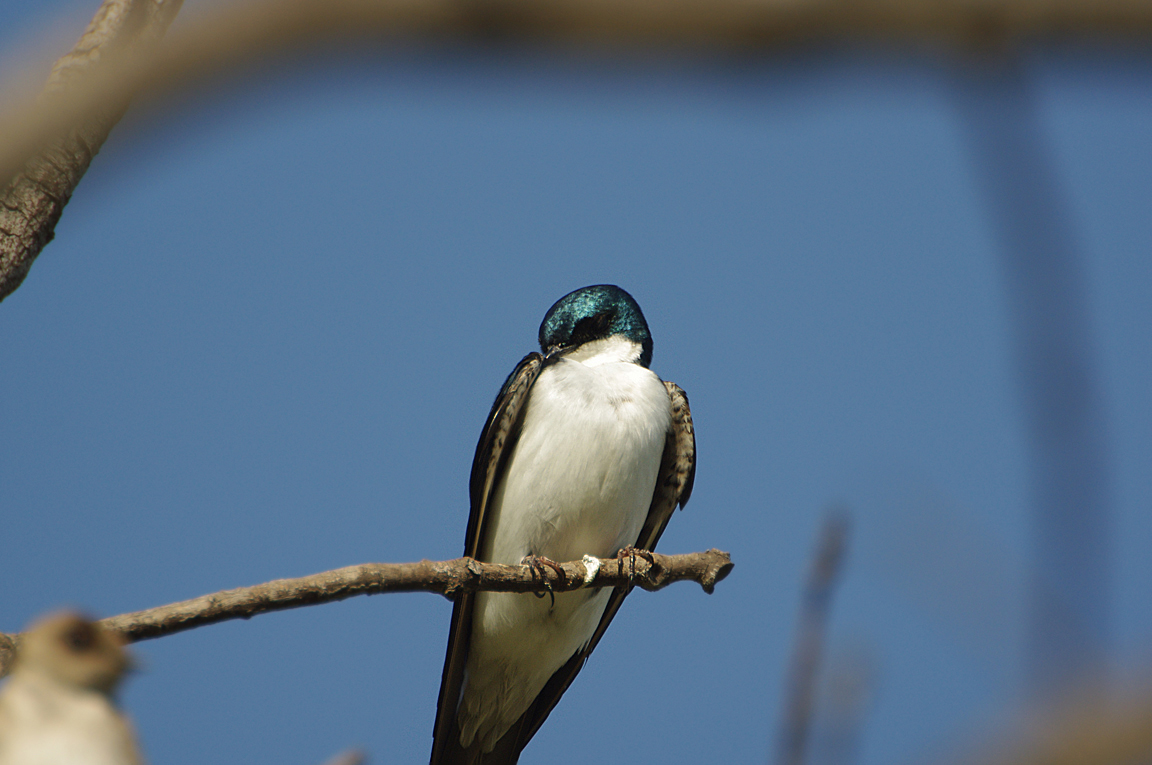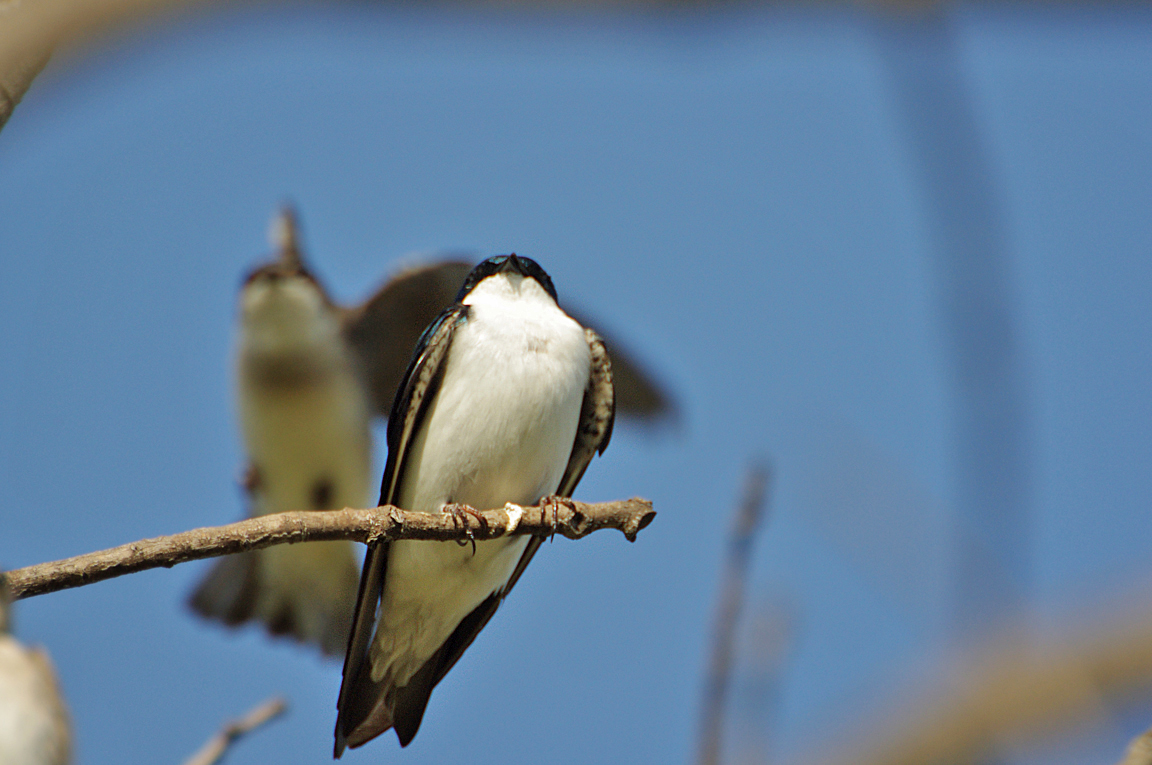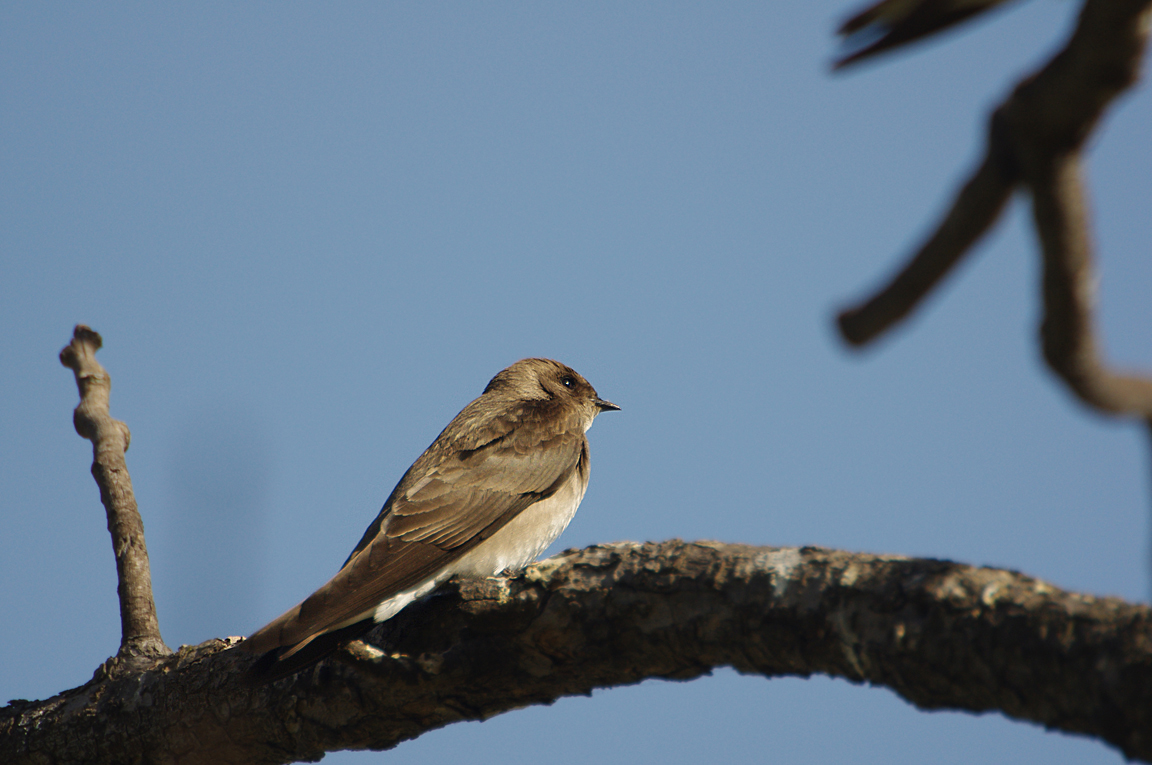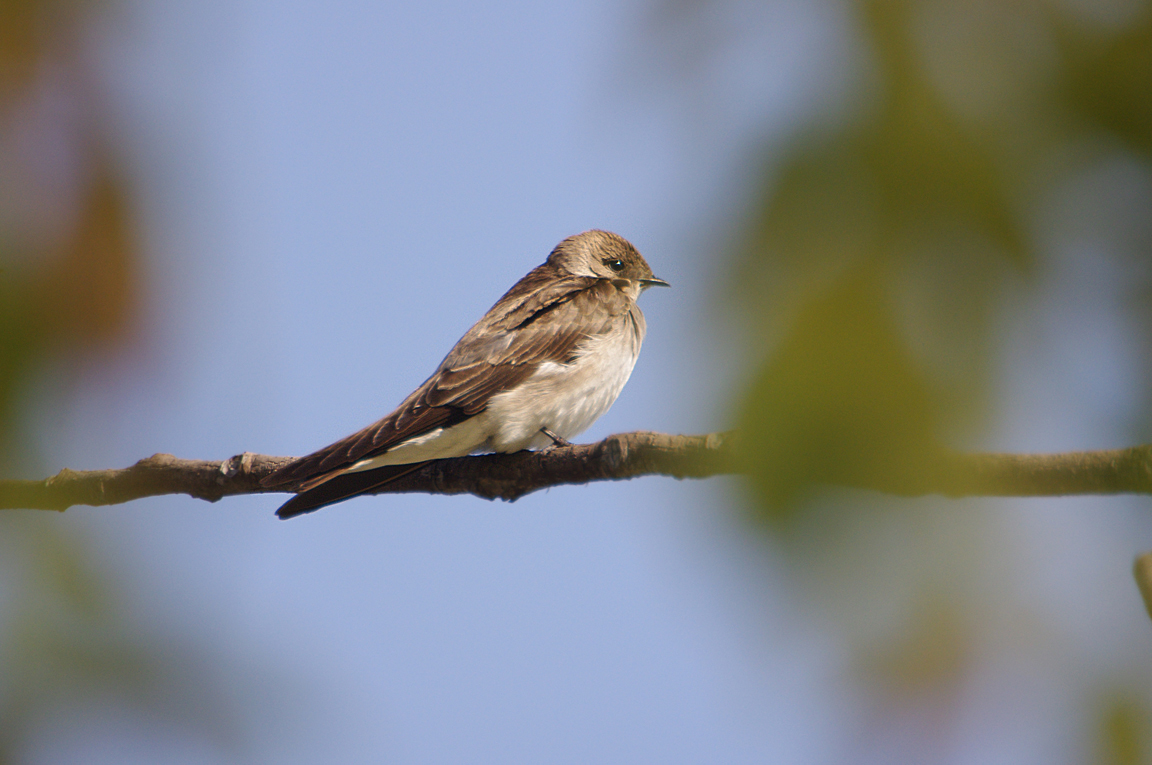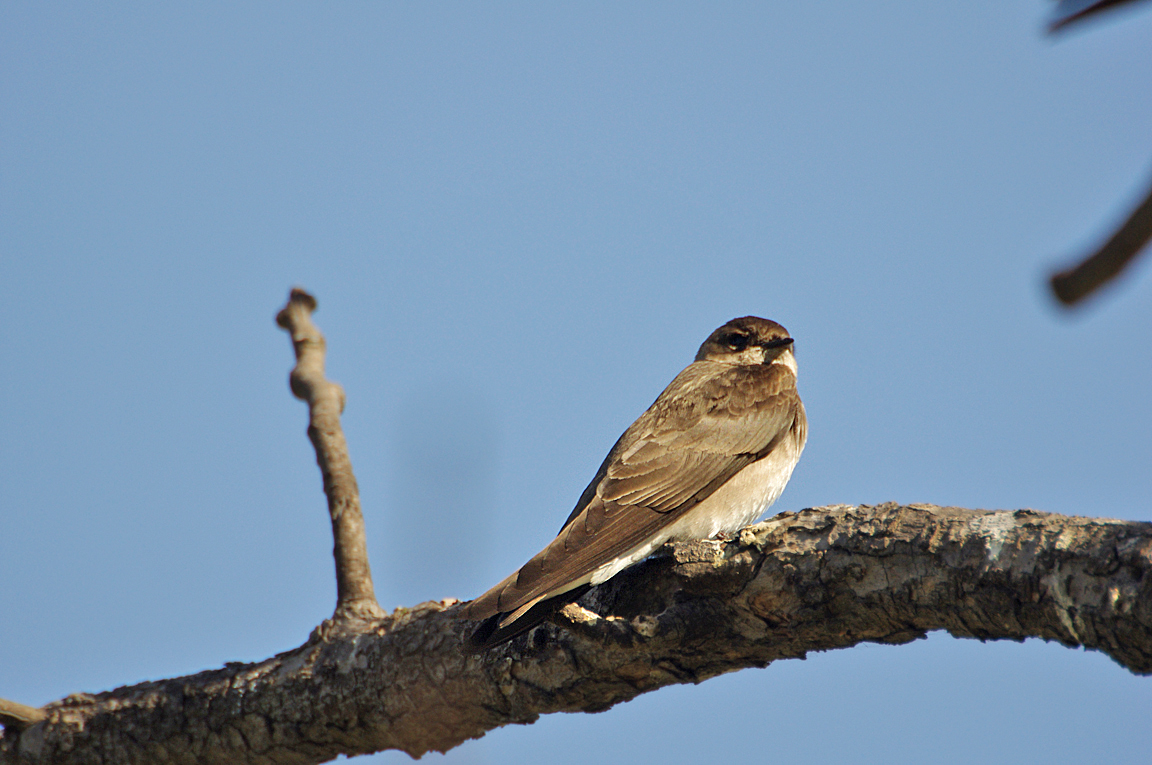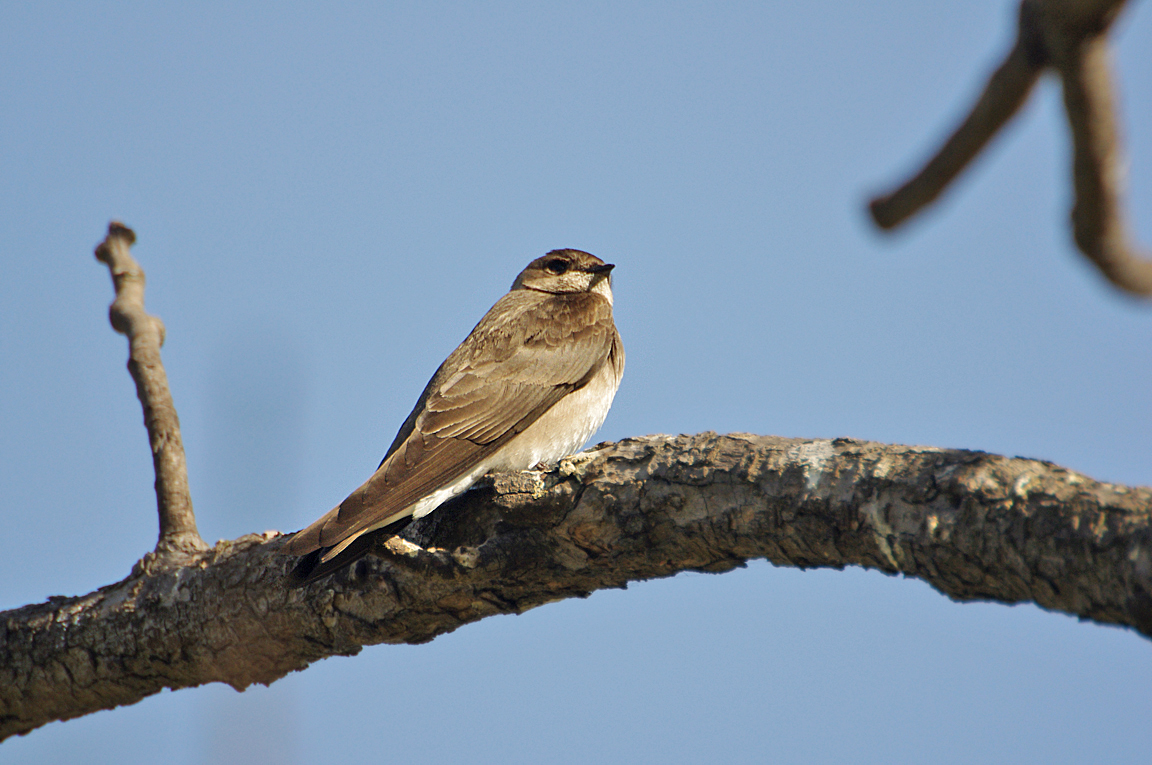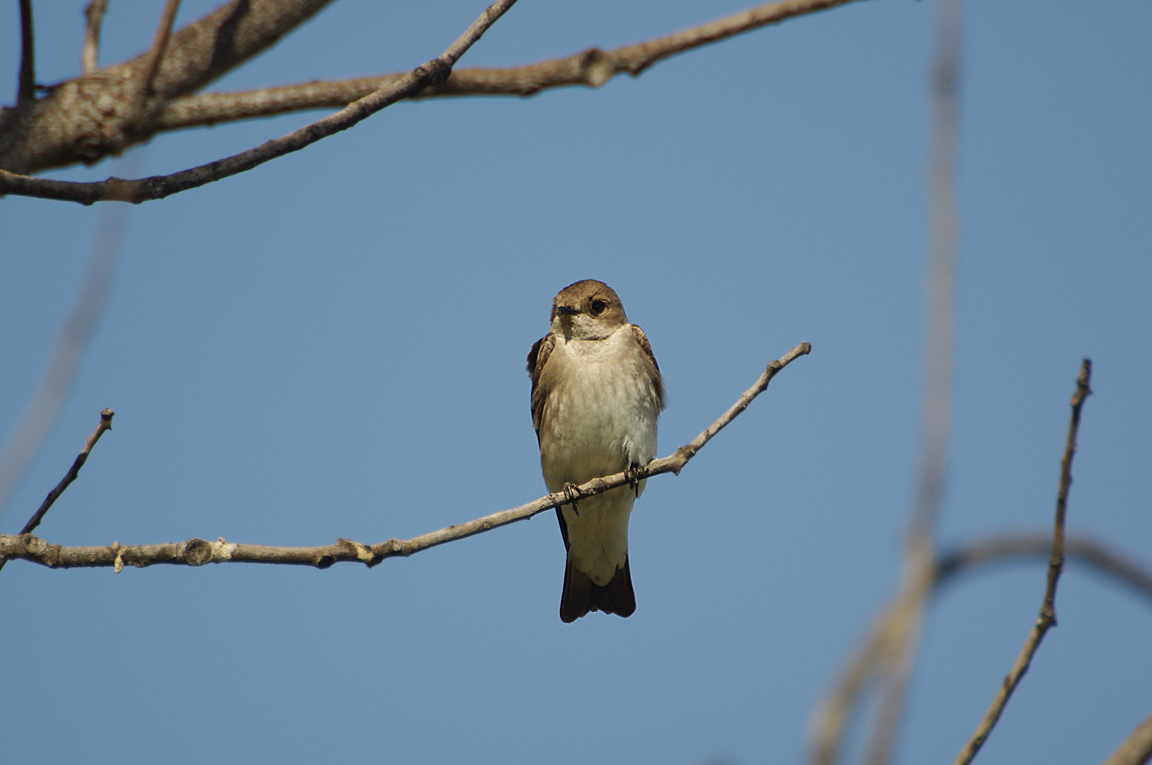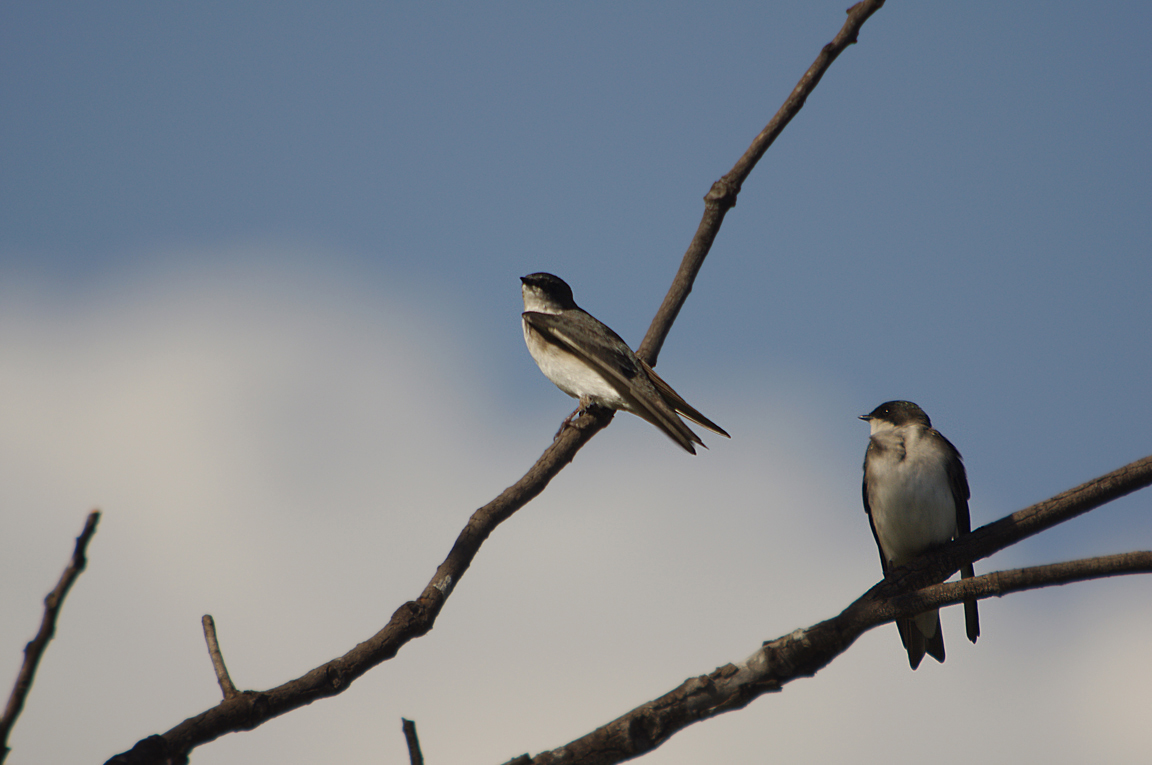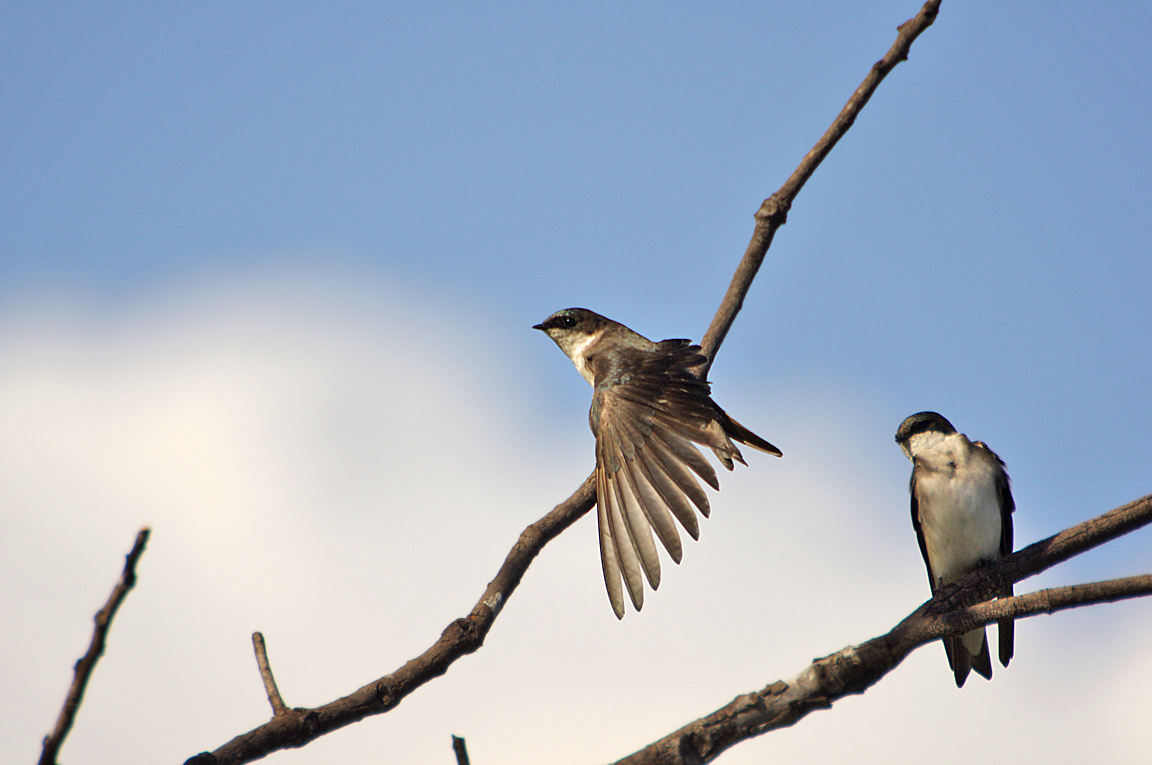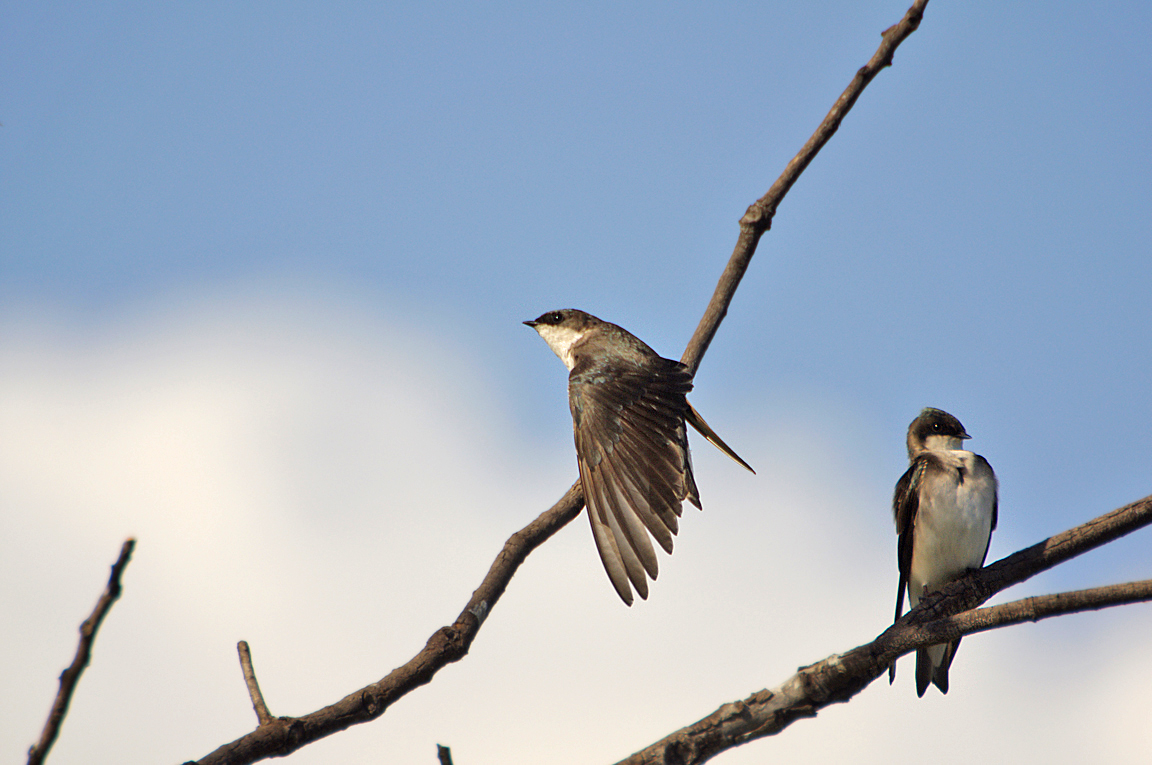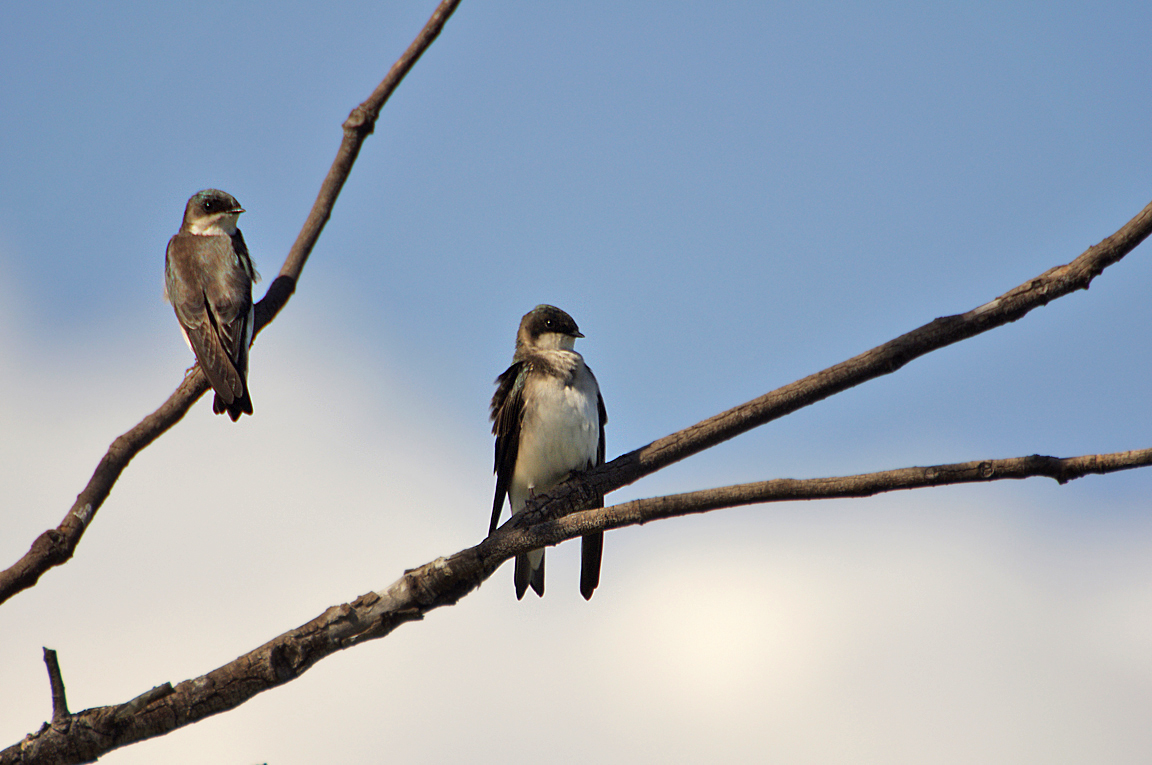|
|
|
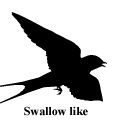 |
Tree Swallow
|
| Tachycineta bicolor | |
A common swallow of marshes and open fields, the Tree Swallow is a ready inhabitant of nest boxes.
Interesting Information
-
Outside of the breeding season the Tree Swallow congregates into enormous flocks and night roosts, sometimes numbering in the hundreds of thousands. They gather about an hour before sunset at a roost site, forming a dense cloud. They swirl around like a living tornado and as darkness approaches they then wheel low over the cattail marsh or grove of small trees. Large numbers drop down into the roost with each pass of the flock until the flock disappears.
-
The Tree Swallow uses many feathers from other birds in its nest. The feathers help keep the nestlings warm so they can grow faster. They help keep levels of ectoparasites, like mites, low too.
-
The Tree Swallow winters farther north than any other American swallow, and it returns to its nesting grounds long before other swallows come back. Its ability to use plant foods helps it survive periods of bad weather.
Description
Adult Description
-
Length Range: 15 cm (5.75 in)
-
Weight: 20 g (0.7 oz)
-
Wingspan Range: 32 cm (12.5 in)
Small slender songbird.
White underneath and shiny blue-green on top.
Small bill.
Long wings.
Sex Differences
Yearling female brown on back with faint greenish sheen and some iridescent greenish blue feathers. Underparts white, sometimes with faint brown band across breast.
Immature
Juvenile sooty gray on back, without trace of blue. Underparts dull white. Dirty brown band across chest.
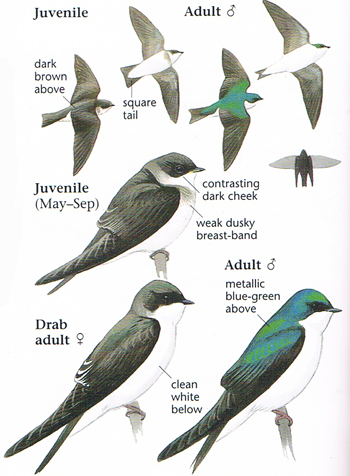
Photo taken from: The Sibley Field Guide by David Allen Sibley
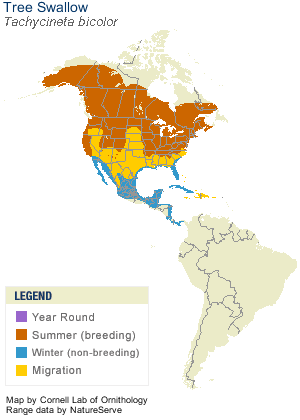
© 2003 Cornell Lab of Ornithology
|
Habitat |
|
Open areas near water and fields, especially wooded swamps and shorelines. |
|
Behavior |
|
Catches insects in flight. |
|
Food |
|
Flying insects and some berries. |
Taxonomy
| Kingdom: | Animalia |
| Phylum: | Chordata |
| Subphylum: | Vertebrata |
| Class: | Aves |
| Order: | Passeriformes |
| Family: | Hirundinidae |
| Genus: | Tachycineta |
| Species: | Tachycineta bicolor |
Similar Species |
|
|
Bird Sound |
|
Song a series of repeated whistles and twitters. |
|
Eggs look like this |
|
Photo taken from: ARCTOS Collaborative Collection Management Solution |
